Syn.: Argemone platyceras var. pleiacantha Fedde
Family: Papaveraceae Juss.
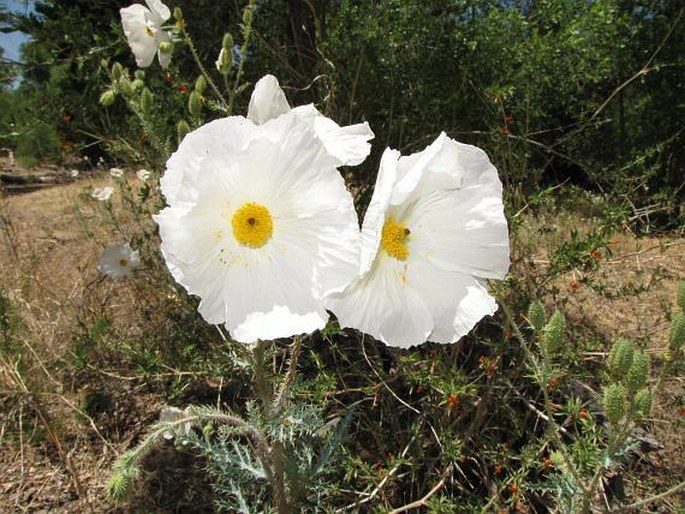
Distribution: In US, states of Arizona and New Mexico and in Mexico, states of Chihuahua and Sonora.
Ecology: Desert, foothills, mountains, grasslands and disturbed areas as roadsides from 500–2200 m elevation. Blooms in all seasons except winter and mainly during summer monsoons.
Description: Annual or perennial herb, stems up to 150 cm tall, erect, branched, with thistle-like foliage, growing from a deep root up to 40 cm long. Leaves are bluish green, deeply lobed, clasping the stem, sparsely prickly with spines 2–4 mm long, both surfaces sparingly prickly on veins, marginal teeth prominent. Solitary flowers terminal on branches, up to 13 cm across; flower buds obovoid, rarely subglobose; 2–4 sepals with naked, spine toothed horns; 4–6 white, papery, crinkled petals, shed after pollination; numerous bright orange stamens; ovary with 4–6 placentae; short or no style; stigma dilated, 4–6 radiate. Fruit is a capsule, ovoid to ellipsoid-lanceoloid, 2–6 cm long, moderately prickly with spreading bristles 5–8 mm long, dehiscent with apical valves. Seeds round-ovate, brown or black 2–2.5 mm.
Notes: All parts of the plant are poisonous, containing among others alkaloid papaverine.

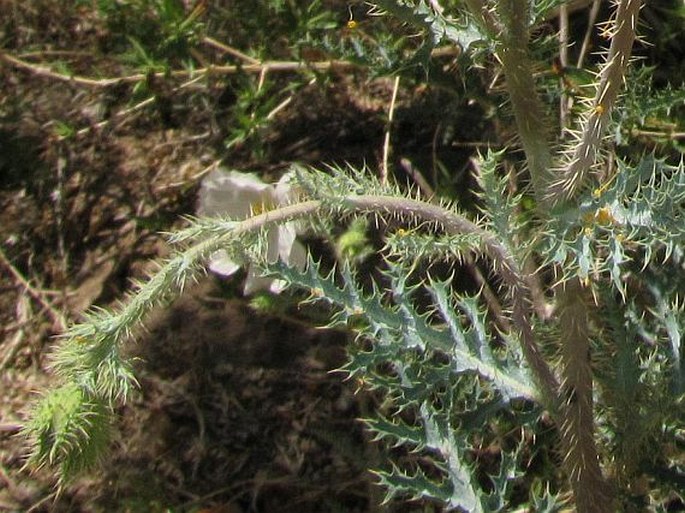
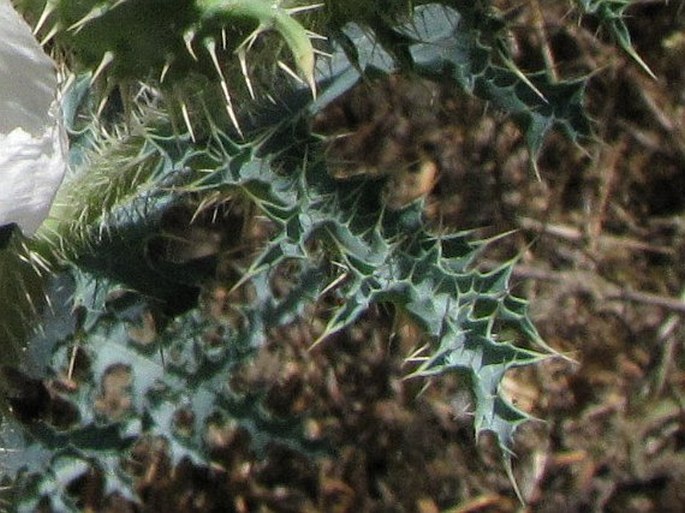
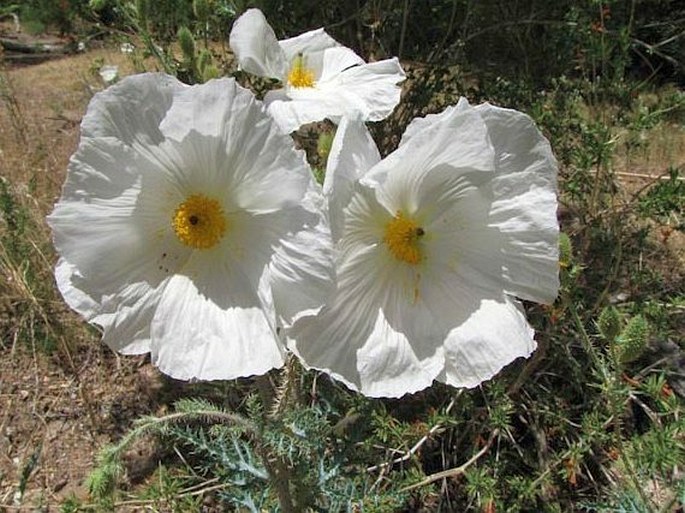
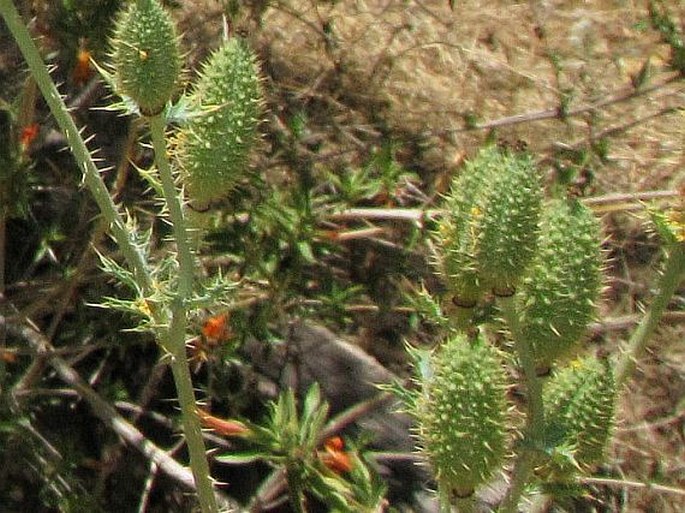
These images were taken in USA, Arizona, Buenos Aires Wildlife Sanctuary (May 2009).


